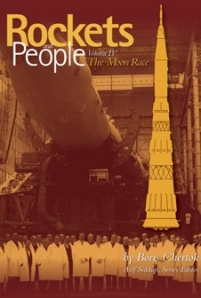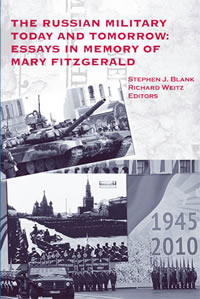Headquartered in Washington, DC, the Historical Office of the Office of the Secretary of Defense (OSD) is an office within the OSD charged with collecting, preserving, and presenting the history of the OSD. It is responsible for publishing several important historical works and comprehensive studies on the defense community’s ongoing effort to keep America’s military the most powerful and competent force in the world.
Duties and responsibilities of the OSD include:
- Represent the OSD to other historical organizations.
- Provide historical advice and assistance to OSD officials and the public.
- Conduct historical research and publish historical studies and reports.
 The Historical Office is a valuable resource for anyone interested in the history of the OSD or the Department of Defense. Its publications, programs, and initiatives provide a wealth of information about the history of the nation’s defense establishment.
The Historical Office is a valuable resource for anyone interested in the history of the OSD or the Department of Defense. Its publications, programs, and initiatives provide a wealth of information about the history of the nation’s defense establishment.
The U.S. Government Publishing Office (GPO) online bookstore offers several interesting and educational publications in print from the OSD. Consider the following DoD-authored titles that cover major subjects spanning decades.
Caspar Weinberger and the U.S. Military Buildup, 1981-1985. In this tenth volume of the Secretaries of Defense Historical Series, historian Edward C. Keefer details Caspar Weinberger’s role in orchestrating the largest peacetime military buildup in U.S. history and the consequential military engagements of the Cold War’s last decade. President Reagan’s choice of Weinberger as Secretary of Defense was paradoxical, given his reputation as “Cap the Knife,” a ruthless budget cutter for Governor Reagan in California and for President Nixon in Washington. Reagan hoped that Weinberger would lead a cost-effective military expansion by trimming fat and increasing efficiency. Instead, he sheathed his budget knife and prioritized the buildup. The military services enjoyed record budgets, the U.S. defense industry posted record profits, and even the average service member saw increased pay and expanded training. Efficiency and fiscal moderation, however, took a back seat.
 Reform And Experimentation After The Cold-War 1989-2001 captures the history of acquisition during a fertile period for initiatives aimed at enabling the Defense Department to become better at supporting the development and production of new weapon systems. During a time of restrained budgets and optimism for a future free of superpower conflict, defense leaders implemented reforms and experimented with new methods designed to sidestep the hurdles that often led to unacceptable cost increases and schedule delays. The increasing consolidation of responsibility for acquisition oversight and policy in the Office of the Secretary of Defense, plus pressure from Congress and elsewhere to fully implement the Packard Commission and Goldwater-Nichols reforms of the mid-1980s, gave defense leaders the motivation and influence to carry out several waves of reform over the 12 years of this wide-ranging study.
Reform And Experimentation After The Cold-War 1989-2001 captures the history of acquisition during a fertile period for initiatives aimed at enabling the Defense Department to become better at supporting the development and production of new weapon systems. During a time of restrained budgets and optimism for a future free of superpower conflict, defense leaders implemented reforms and experimented with new methods designed to sidestep the hurdles that often led to unacceptable cost increases and schedule delays. The increasing consolidation of responsibility for acquisition oversight and policy in the Office of the Secretary of Defense, plus pressure from Congress and elsewhere to fully implement the Packard Commission and Goldwater-Nichols reforms of the mid-1980s, gave defense leaders the motivation and influence to carry out several waves of reform over the 12 years of this wide-ranging study.
 Forging a Total Force: The Evolution of the Guard and Reserve traces the history of the National Guard and Reserves from the Revolutionary War-era militias to today’s function as an integral part of the nation’s total force. In the beginning, the philosophy of a citizen-solider, capable of taking the field with little or no training, predominated. Modern combat made it clear that a more professional force was necessary; however, policy changes didn’t keep up with that changing necessity. It wasn’t until the defense buildup of the 1980s that a combat-ready reserve became fact. This book focuses on 1990 to 2011, with particular emphasis on the decade after 9/11.
Forging a Total Force: The Evolution of the Guard and Reserve traces the history of the National Guard and Reserves from the Revolutionary War-era militias to today’s function as an integral part of the nation’s total force. In the beginning, the philosophy of a citizen-solider, capable of taking the field with little or no training, predominated. Modern combat made it clear that a more professional force was necessary; however, policy changes didn’t keep up with that changing necessity. It wasn’t until the defense buildup of the 1980s that a combat-ready reserve became fact. This book focuses on 1990 to 2011, with particular emphasis on the decade after 9/11.
Pentagon 9/11 is the most comprehensive account of the 9/11 attack on the Pentagon and the aftermath, including unprecedented details of the impact on the Pentagon building and personnel and the scope of the rescue, recovery, and caregiving effort. Evocative narratives are based on firsthand accounts of survival, tragedy, and heroism drawn from hundreds of interviews, with 32 pages of previously unpublished photographs, diagrams, and illustrations.
The GPO Online Bookstore – Easy Access to Federal Publications
HOW DO I OBTAIN THESE RESOURCES?
Sign up to receive promotional bulletin emails from the US Government Online Bookstore.
Shop Online Anytime: You can buy a vast majority of eBooks or print publications —with FREE Standard Shipping worldwide— from the U.S. Government Online Bookstore at https://bookstore.gpo.gov.
- Click here to purchase Caspar Weinberger and The U.S. Military Buildup, 1981-1985
- Click here to purchase Reform And Experimentation After The Cold-War 1989-2001
- Click here to purchase Forging a Total Force: The Evolution of the Guard and Reserve
- Click here to purchase Pentagon 9/11
Order by Phone or Email: Call our Customer Contact Center Monday through Friday, 8 am to 4:30 pm Eastern (except US Federal holidays). From US and Canada, call toll-free 1.866.512.1800. DC or International customers call +1.202.512.1800. Email orders to ContactCenter@gpo.gov
Visit a Federal depository library: Search for U.S. Government publications in a nearby Federal depository library. You can find the records for most titles in GPO’s Catalog of U.S. Government Publications.
Find more than a million official Federal Government publications from all three branches at www.govinfo.gov.
About the author: Blogger contributor Ed Kessler is a Promotions Specialist in GPO’s Publications and Information Sales Office.
Images and additional content provided by Government Book Talk Editor Trudy Hawkins. Trudy is the Senior Marketing & Promotions Specialist in GPO’s Publication & Information Sales Office supporting the U.S. Government Online Bookstore (https://bookstore.gpo.gov).



 Posted by Trudy Hawkins
Posted by Trudy Hawkins 


















